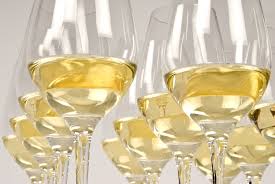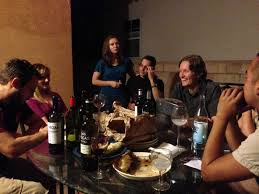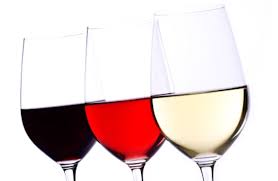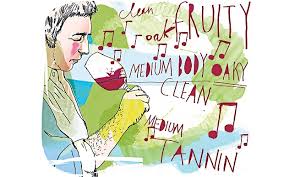Introduction
As we all know, tastes vary from person to person and that begins at the moment we are born. Anyone who has  children can without a doubt remember that certain foods or drinks were not really appreciated and then ended up somewhere in the living room or on the wall.
children can without a doubt remember that certain foods or drinks were not really appreciated and then ended up somewhere in the living room or on the wall.
Taste in the broadest sense of the word develops in the course of years by a very complex interplay between eating habits, experience, acceptance and all odour impressions that you experience and discover in the course of your life. The flavour is a combination of scents that you perceive as tastes of sweet, sour, salty and bitter, triggering recognition by evoking memories of the past. From this recognition we give everything we smell and taste a name, such as “sugar sweet”, “salty as the sea”, “it faintly reminds me of strawberries”, “bitter as gall”. So everyone has a degree of recognition in everything you taste and smell. See below a four step approach to wine tasting which you can use as a guide.
Wine tasting
This complex interaction that mainly takes place in our mouth, is based on everyone’s personal taste and odour-called reference. Because taste is so personal, it becomes even more complicated to tell how the taste of a wine is and what flavours you or I will recognize. It is simple to name a wine sweet, bitter or sour. Even an untrained wine drinker will have no qualms about that.
Judging a wine on the value and composition you can really only do through tasting many different wines regularly and asking yourself the question, where was the taste or smell impression the most consistent. Although the viewing, taste and smell section is very personal, you can also find your own preferences by further testing or by talking with fellow wine lovers and friends. Organize your own wine tastings! You do not need to go to an official wine tasting event.
Tasting types
When tasting, you can sometimes judge a wine from different wineries with different vintages. We then speak of a vertical tasting. But we can also taste a vintage of several wineries in a specific wine region example, or only wines of a certain grape, which gives you the possibility to discover the characteristics and differences in colour, smell and taste by region or country. We call this a horizontal tasting. Again, this is nice to know, but we will rather have our private wine parties.
End result
Whether you judge wine as a professional or as a consumer, it will not change the final judgement. Either you will like it or not, it is a simple as that. A professional will of course have to analyse a wine from a different point of view and describe and evaluate it in order to put a good product in the market. The trial steps to reach this verdict, however, are the same in both cases.
Test steps
The test sequence selected here (appearance, smell, taste, colour) stems from the ongoing developments during the vinification process. Just a quick reminder: smell and taste give the most information about the quality of a wine. The amount of wine that you pour into the glass to taste should be up to one third of the glass.
Step 1, appearance:
 Keep your glass at the stem and upright and look from the top of the glass. Assess the brightness and the possible presence of any other factors such as bubbles, sludge etc. Now turn the glass slightly horizontally over a white surface, such as a tablecloth or a sheet of white paper and look at the surface for the colour intensity. It will be intense ruby red with a young wine and brick red in older wines. The outer edge will also show you narrow and watery in young wines and emphatic colours in slightly older wines.
Keep your glass at the stem and upright and look from the top of the glass. Assess the brightness and the possible presence of any other factors such as bubbles, sludge etc. Now turn the glass slightly horizontally over a white surface, such as a tablecloth or a sheet of white paper and look at the surface for the colour intensity. It will be intense ruby red with a young wine and brick red in older wines. The outer edge will also show you narrow and watery in young wines and emphatic colours in slightly older wines.
Roll the wine quietly in the glass and look at the tears in the glass. The slower they flow, the more viscosity (stickiness) in the wine, the more sweetness, the higher the alcohol percentage.
Step 2, the smell:
This might be the most important step. Roll the wine in the glass, so that oxygen can reach all of the wine and then smell for a few seconds in the glass. By the rolling, the fragrances are released from the surface of the wine whereby the nose can absorb them better. The smell alone will not say anything about the wine, but already gives an idea about the possible complexity or simplicity of the wine. Some wines need more time to present themselves; other wines have such overwhelming bouquet (smell) that you can observe this already while pouring.
Step 3, the taste:
Take a small sip of the wine and let it go through your whole mouth so you get a first impression. Swallow the wine or spit it out (just at will). If you have to taste a lot of wines you better spit! Take a slightly larger sip and let it go through the mouth so that it touches all parts of the tongue and mouth. It might be even better if you slurp some air in, allowing more flavour to be released from the wine. It is not a problem that you make this sound at all, because that it is part of the exercise.
or spit it out (just at will). If you have to taste a lot of wines you better spit! Take a slightly larger sip and let it go through the mouth so that it touches all parts of the tongue and mouth. It might be even better if you slurp some air in, allowing more flavour to be released from the wine. It is not a problem that you make this sound at all, because that it is part of the exercise.
Step 4, the after taste / evaluation:
After all the drinking, slurping and spitting we would like to know how long the flavour remains in the mouth and what impressions we can thereby gain. If it is a pleasant long finish than we usually have a good balance of quality. If the after taste is short and thin or not present the wine quality might not be that good and age is no excuse here. Also, even if a wine is young, you can still learn whether it has potential and is in balance or is yet to come into balance. How you experience the after taste, depends entirely on your taste-reference and experience.
Conclusion
Tasting wine is an art and skill in itself but should be especially enjoyable! By increasing your knowledge and experience wine tasting will be rewarded with an even greater pleasure.
Right now you could go a step further, by trying to put into words what you have just discovered, talk to your friends and try to perceive what the other is experiencing from the wine. For example does the wine smell pure or can you detect other strange smells?
You now have a better knowledge to pair the right wine to the right dish, which can be read here.
We all make mistakes and everyone smells something else, but do not be afraid to share your opinion. By talking about it make it you can make it easier on yourself. Maybe you can recognize a grape? You can even discover something of a wine when you have finished your glass and smell the residue. Give it a try. By smelling well you will learn a lot of the wine.
By following the above steps you can now go ahead and make your own personal scores. See this link for classifying your wines.
If you are a lover of Chardonnay, then click the pictures on the right hand side (for mobile users just under this text) for your specific location and find a summary of reviews for/access to the world’s best Chardonnays.
I hope you have learned some valuable lesson here, however, please let me know if I have missed something or comment otherwise. Thanks!

I had almost the tutorial like this in France with minor differences. The funny part was a better evaluation credit was given to the person who can cleverly explain the taste in a fantastic way even though it might not be in accordance with the others
Hi Tinnakon, thanks again for your comment. France is one of the oldest wine countries and they know what they are talking about. Yes, some people have a way of saying things. However, the taste of wine is something personal in the end. Everybody has his own taste! Cheers, Jerry